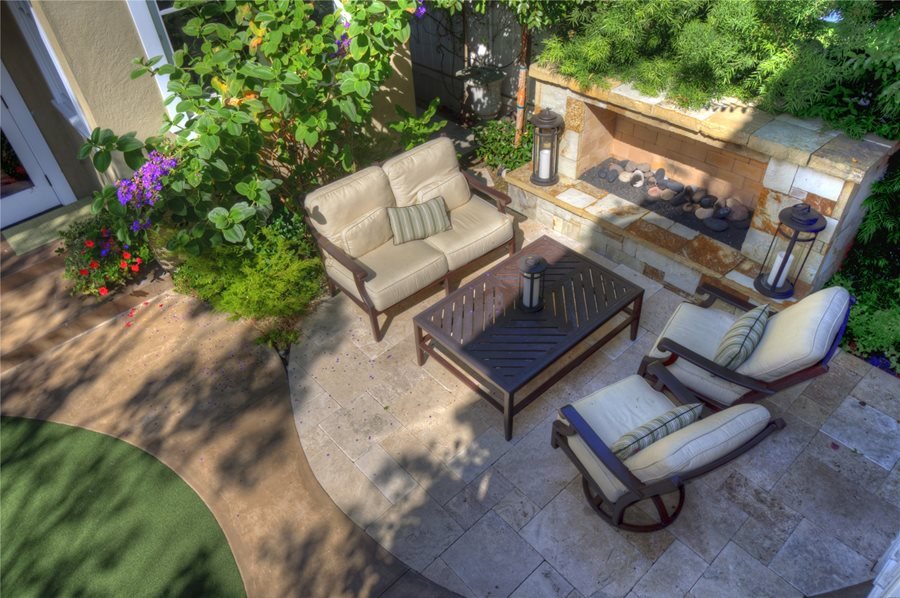In the concrete jungle of urban living, finding a slice of nature to call your own can be a challenge. But that doesn’t mean you have to give up on creating a beautiful and functional garden paradise. Urban gardens may be small in size, but they can have a big impact when it comes to landscape design. Opulands Landscape Design is revolutionizing small space landscaping in urban gardens. With their expertise in creating visually stunning and functional outdoor spaces, they have become the go-to choice for those looking to maximize the impact of their landscapes. Opulands understands that a well-designed outdoor area can greatly enhance one’s quality of life, even in the confines of a city apartment.With some strategic planning and creative thinking, these tiny green spaces can become havens of tranquility and beauty amidst the hustle and bustle of city life. From vertical gardens to clever use of containers, this article will explore how to maximize every inch of your urban garden for maximum impact.
Benefits of urban gardening
Urban gardening offers a multitude of benefits that extend beyond simply adding aesthetics to the concrete jungle. One of the most significant advantages is the ability for residents to grow their own fresh produce right at home. This not only promotes healthier eating habits, but also reduces reliance on mass-produced and often chemically treated fruits and vegetables.
Furthermore, cultivating plants in urban spaces can help improve air quality by absorbing carbon dioxide and releasing oxygen through photosynthesis. With an increasing number of skyscrapers dominating city landscapes, having green plants scattered throughout urban areas can significantly contribute to combating air pollution. Beyond purifying the air we breathe, urban gardens also act as natural insulators for buildings, reducing energy consumption by providing shade in hotter months and insulation during colder seasons.
Assessing your space
Assessing your space is an essential first step towards maximizing the impact of your urban garden. Before you start designing or planting, take some time to observe your surroundings and consider what elements are already in place. Look at the layout of your space, taking note of any natural focal points such as trees or architectural features that could serve as a backdrop for your garden. Also consider how much sunlight different areas receive throughout the day, as this will help determine which plants will thrive in each location.
In addition to observing the physical aspects of your space, it’s important to assess its potential functionality. Think about how you plan to use the outdoor area – will it be primarily for relaxing and entertaining guests, or are you looking to cultivate a productive vegetable garden? Understanding how you want to utilize the space will guide your design decisions and ensure that every corner serves a purpose. By assessing both the physical characteristics and functional requirements of your urban garden, you can create a cohesive and personalized outdoor oasis that makes a big impact despite its small size.
Design principles for small gardens
When designing a small garden, it’s essential to keep a few key principles in mind. First and foremost, the principle of cohesion is crucial to create a harmonious and well-balanced space. Choosing a consistent color palette, selecting plants with similar heights and foliage textures, and using repetition in elements like containers or decorative features can help achieve this sense of unity.
Another important principle for small gardens is the concept of creating depth and perspective. Incorporating different layers in your design can make the space feel larger than its actual size. This can be achieved by using trellises or vertical planters to add height, placing larger plants toward the back of the garden, or employing pathways that lead the eye into specific areas.
Choosing the right plants
Choosing the right plants for a small urban garden is crucial in maximizing its impact and creating a lush oasis despite limited space. When selecting plants, consider their size, growth habits, and maintenance requirements to ensure they thrive in your garden. Opt for dwarf varieties or those that can be trained as espaliers against walls or fences to maximize vertical space. Additionally, look for plants with interesting textures and colors that will provide visual interest all year round.
Consider incorporating a mix of evergreen and deciduous plants to add depth and variety to your small garden. Evergreens offer year-round structure and color while providing privacy, while deciduous plants provide seasonal interest with vibrant foliage changes. Furthermore, including low-maintenance plant species can help reduce the time spent on upkeep without sacrificing beauty. Native plants are often well-adapted to local climate conditions and require minimal care once established.
Conclusion: Creating an oasis in the concrete jungle
In conclusion, creating an oasis in the concrete jungle is not only possible but essential for our well-being in urban areas. By maximizing landscape design in our small spaces, we are able to transform dreary environments into vibrant and inviting sanctuaries. With careful thought and creative planning, we can utilize every nook and cranny to add a touch of greenery. Driveway pouring in San Jose is one such element that can transform a mundane driveway into a stylish and practical addition to the landscape.
One important aspect of creating an oasis is selecting the right plants for the environment. In urban gardens, limited sunlight can be a challenge. However, there are many shade-tolerant plants that can thrive even in low-light conditions. Incorporating these plants into our designs will not only bring life and color to our small spaces but also create a sense of tranquility. Furthermore, incorporating water features into urban gardens adds a refreshing element that helps mask out the noise and chaos of city life. The sound of flowing water has been scientifically proven to reduce stress levels and promote relaxation. Whether it’s a small fountain or a mini pond with fish, introducing water elements can turn an ordinary backyard into an enchanting retreat.
